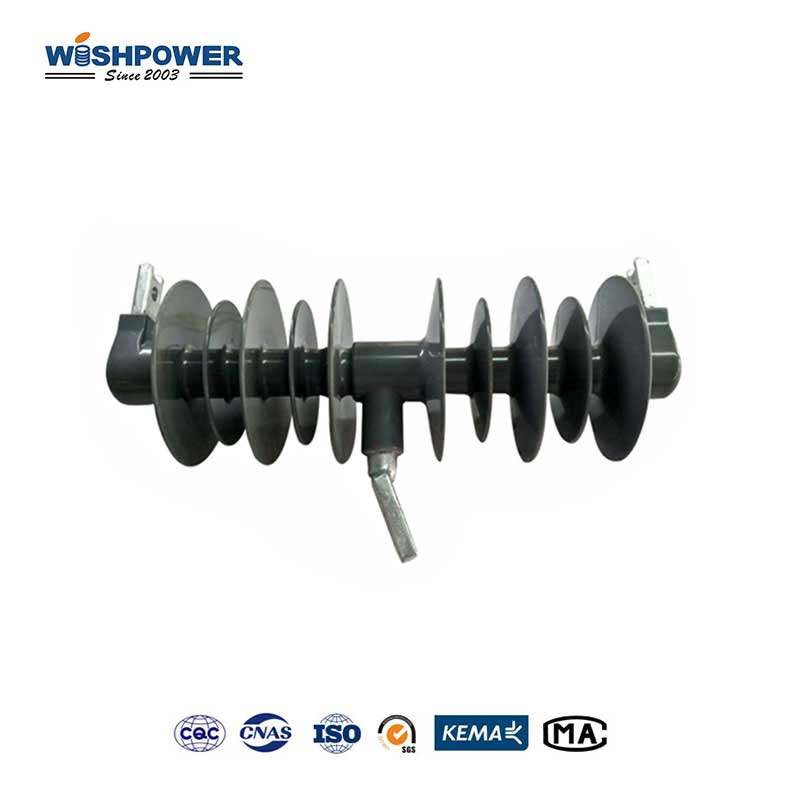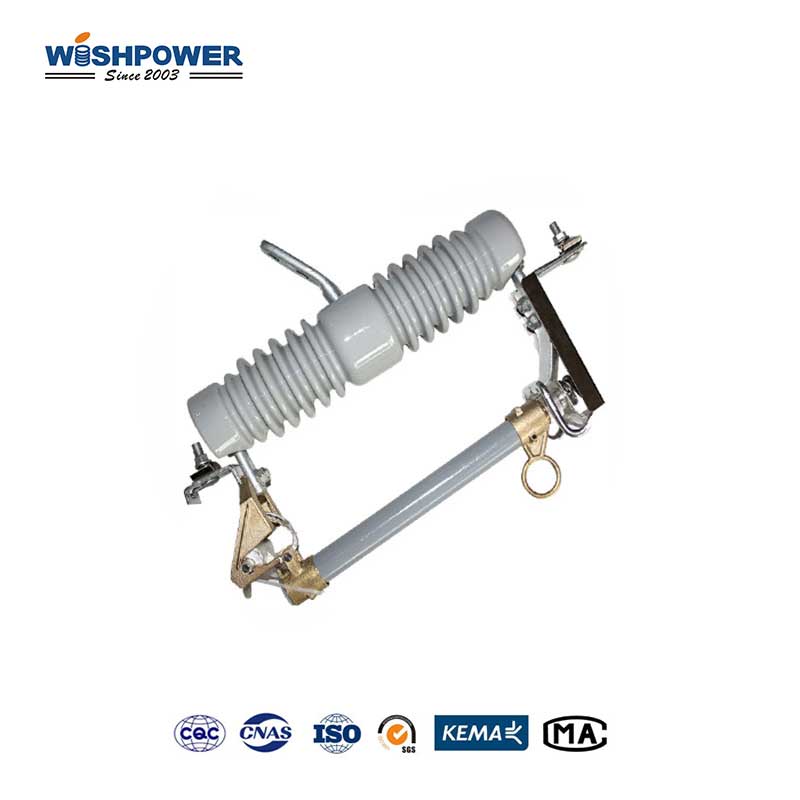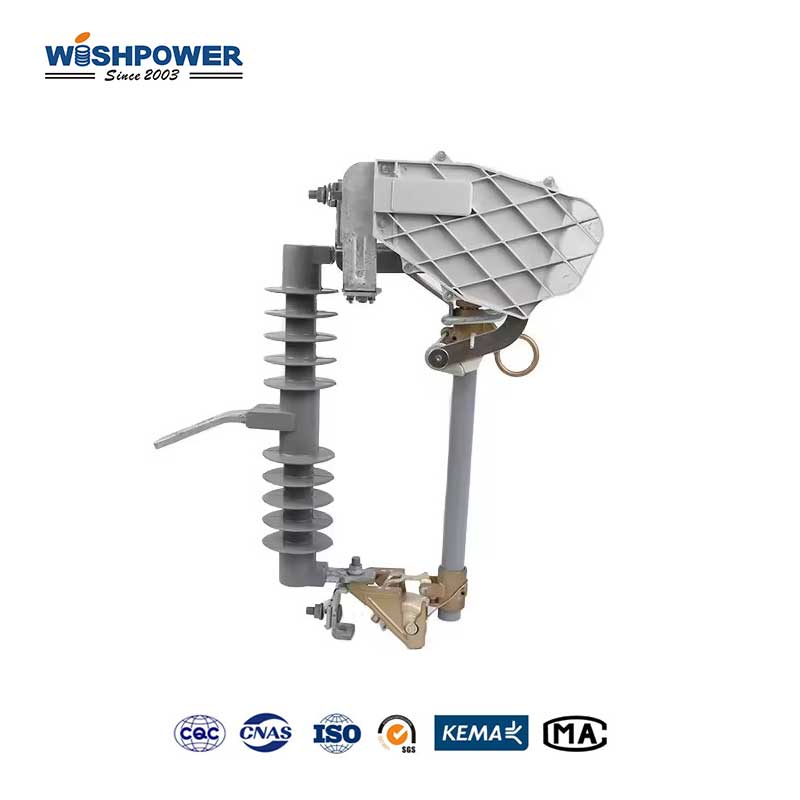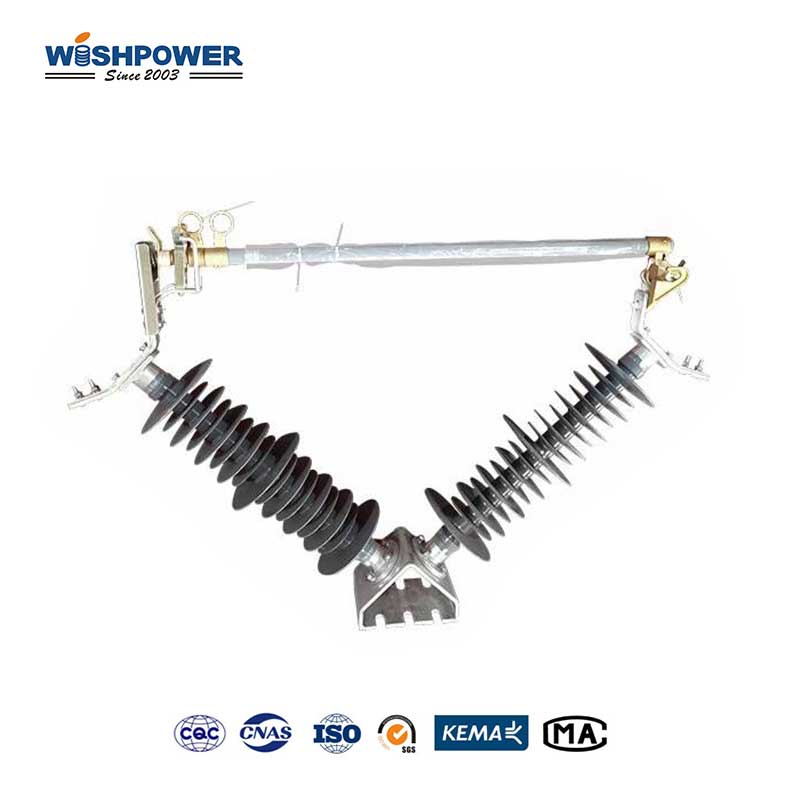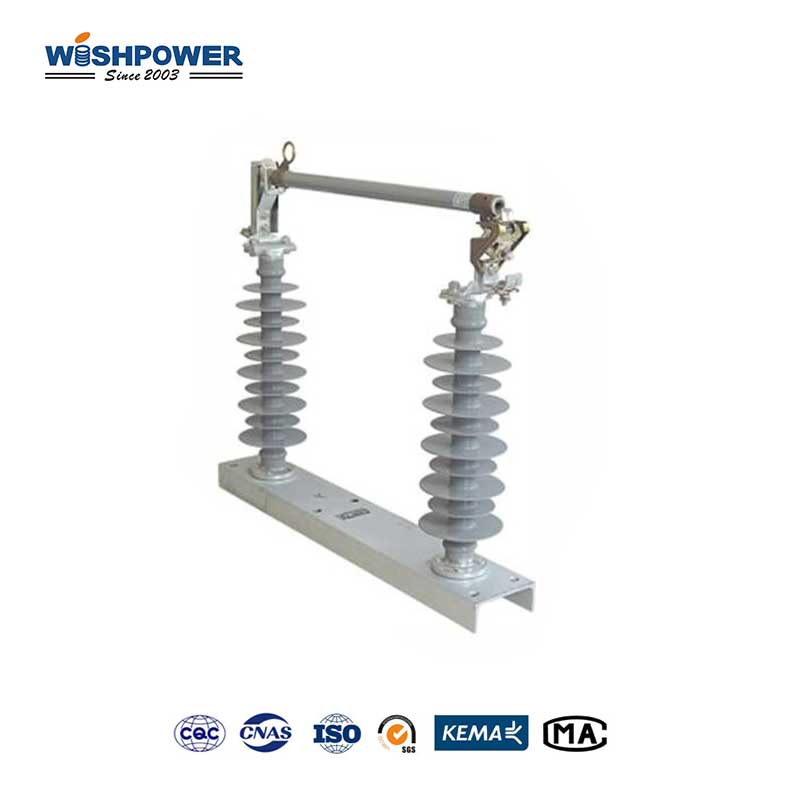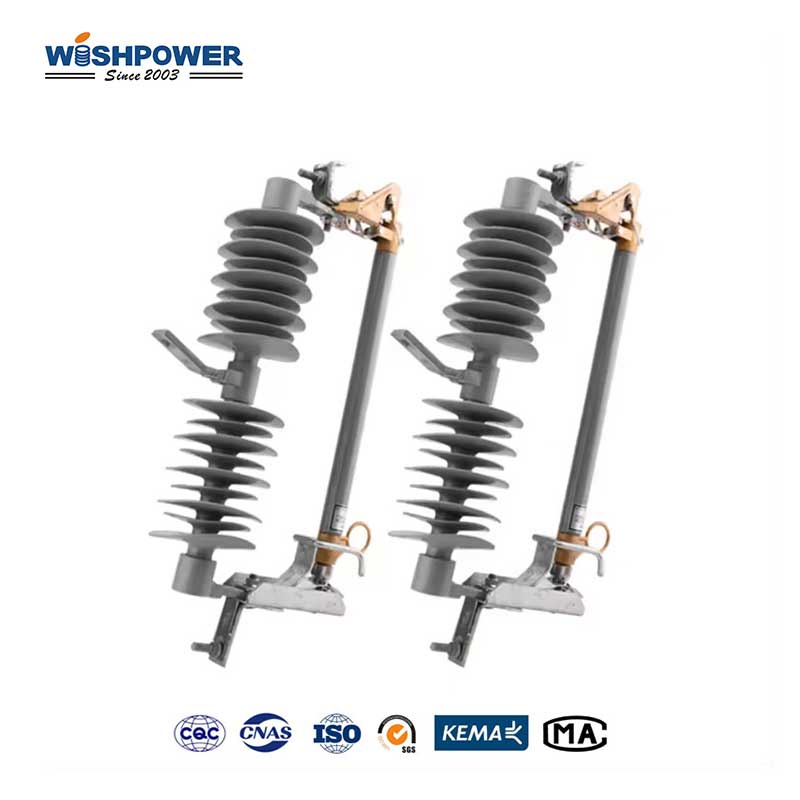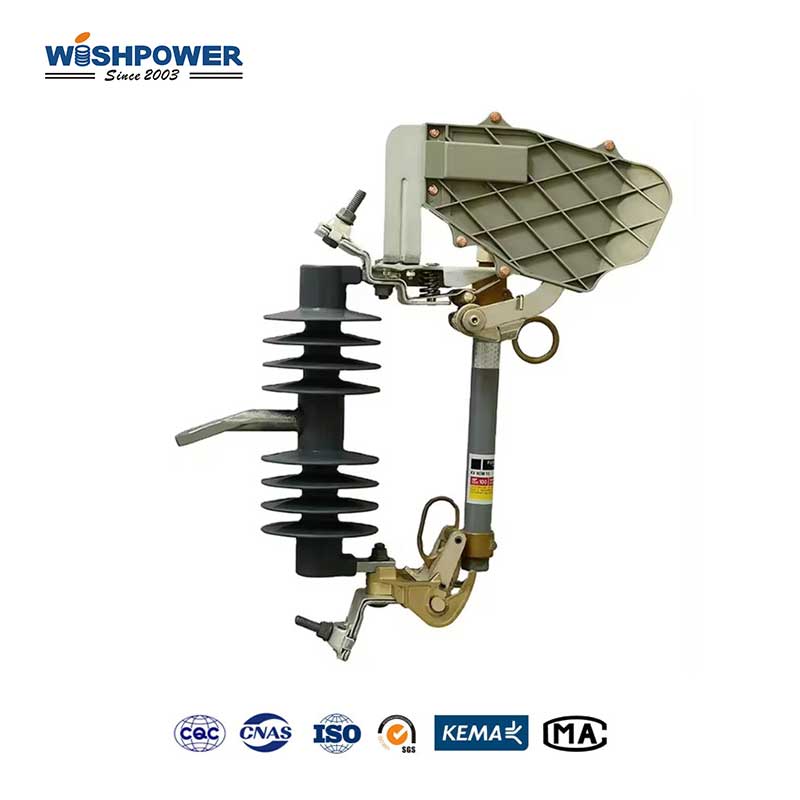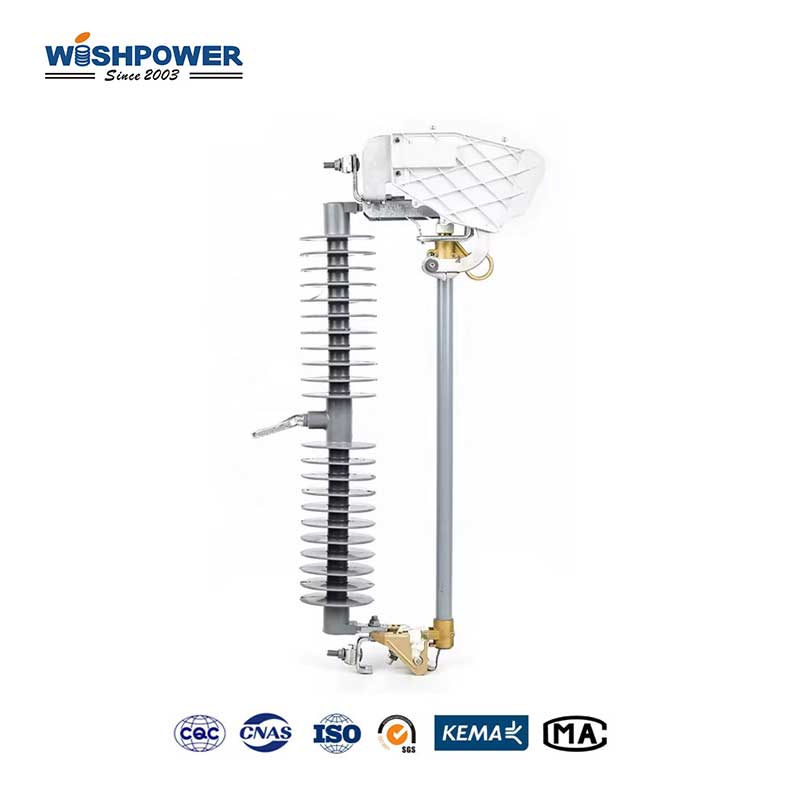Specification
|
Bracket Type
|
No |
|
Type
|
Cutout
|
| Dimensions |
440mm x 392mm x 35mm |
| Height |
35mm |
| Length |
440mm |
| Weight |
3.6 kg |
| Width |
392mm |
| BIL |
12 kV |
| Creep and Leakage Distance |
440 mm |
| Current Rating |
100 A |
| Fuselink Current Range |
1A to 100A – removable buttonhead fuse link only |
| Reference Voltage Limit – Minimum |
|
| |
|
| Voltage – Maximum |
12 kV |
| Voltage Rating |
12 kV |
| |
|
Wishpower has more than 20 years of experience in the production and development of Fuse Cutout products. We have provided different products and solutions to customers in different fields around the world. We are honored to be your product supplier and problem solver. Please get more information directly through this website or info@wishpower.net

What is the Electrical Fuse Cutout?
Electrical fuse cutout is widely used in electrical power distribution systems to protect transformers and also other significant apparatus against over-current situations such as short circuits or over-current. These cutouts have a fuse segment that gets melted or breaks with any maximum allowable current, thus cutting off the flow of electricity and preventing damage. The housing is made of such materials as silicone rubber or other types of advanced polymers that provide better protection against weather conditions and mechanical characteristics than porcelain or glass. This makes them more long-lasting and efficient in poor environmental conditions than the plastic pallets of other materials. Moreover, the construction of the polymer provides considerable safety in its non-breakable features; therefore, numerous risks of injury or breaking the equipment are unlikely to occur. For this reason, it is appreciated for its high performance, safety measures, and resistance of the electrical system to a variety of unfavorable conditions.
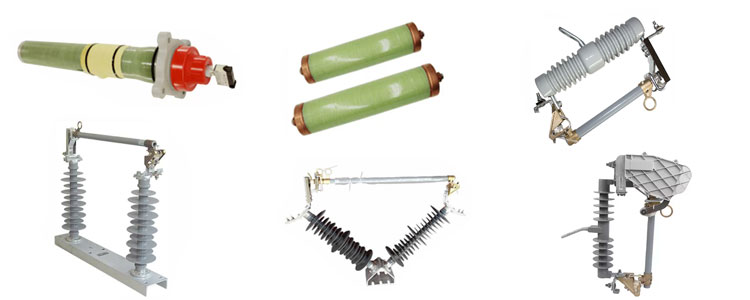
Types:
Basic classification:
- Dropout Fuse Cutout
When overcurrent occurs, the fuse of this type of fuse melts and the fuse tube falls, thus cutting off the circuit. This design makes it easy to identify the fault location, and maintenance and replacement are also convenient.
- Non-Dropout Fuse Cutout
After the fuse of this type of fuse melts, the fuse tube will not fall but remain in place. It is mainly used in occasions that require higher safety to prevent secondary faults caused by falling objects.
Functional classification:
- Loadbreak Fuse Cutout
This type of fuse has the functions of both fuse protection and disconnector. It can be operated under load conditions, which is convenient for line maintenance and fault handling.
- Linkbreak Fuse Cutout
This type of fuse is specially designed to quickly cut off the faulty line to avoid further damage to the power system. They are usually used to protect key equipment and lines to ensure the reliability and safety of the system.
Special function classification:
- Lightning Arrester Integrated Fuse Cutout
This type of fuse integrates the lightning arrester function. It can effectively protect the overvoltage in the power system while protecting the equipment.
- Windproof Fuse Cutout
This type of fuse is designed to resist strong wind environments. It has enhanced mechanical strength and stability and can maintain reliable operation under severe weather conditions.
Working Principle
- Normal working state:
Under normal current conditions. Current passes through the fuse in the High Voltage Cutout, no operation is required, and the power system operates normally.
- Overcurrent detection:
As far as the overcurrent is concerned, an instance of such overcurrent may comprise a short circuit or an overload, as such, the current will be larger than the rated current of the fuse. The fuse precautions are made according to certain current-time characteristics, and when the current exceeds its rated value, the fuse starts to heat up.
- Fuse blown:
As the current increases and goes beyond the standard, the temperature of the fuse continues to rise, and shortly the fuse goes off. The fusing process is very fast it interrupts the circuit and stops the flow of the overcurrent and hence protects the downstream equipment and lines.
- Circuit disconnection:
After the fuse blows, the fuse tube of the drop-out fuse will fall, clearly indicating the fault location. The fuse tube of the non-drop-out fuse remains in place, but the circuit is also cut off. For load-switching fuses, the disconnection operation can be performed under load conditions to further ensure safety.
- Fault indication and maintenance:
Fuse melt and the condition of the fuse tube either dropped or still in place offer an easily understandable fault indication that will help maintenance personnel to refer to the fault quickly. When the fault has been cleared, the maintenance personnel can certainly restore the fuse or the fuse tube expending to bring the fuse into service again.

Cases
Case 1. Distribution transformer protection
In rural distribution networks, transformers are usually installed on poles. It can effectively protect these transformers and ensure the continuity and reliability of the power supply.
Case 2. Overhead line protection
In mountainous areas or scenic areas, overhead lines are often affected by trees or other natural factors. It can effectively protect the lines and reduce the impact of faults on the entire power grid.
Case 3. Capacitor bank protection
In the distribution system of industrial parks, capacitor banks are installed to improve the power factor. It is used to protect these capacitor banks and ensure their normal operation.
Case 4. Ring main unit protection
In the underground distribution network of the city, the ring main unit is distributed at various nodes, and it is protected by it to improve the reliability of the entire distribution system.
Case 5. Wind power generation system protection
In wind farms in coastal areas, can effectively protect power generation equipment and cables under strong wind conditions and ensure the stable operation of wind power generation systems.
Case 6. Solar photovoltaic system protection
In large photovoltaic power stations, Polymer Cutouts are installed between each photovoltaic array and inverter to ensure that the current is quickly cut off and the equipment is protected in the event of a fault.
About Wishpower
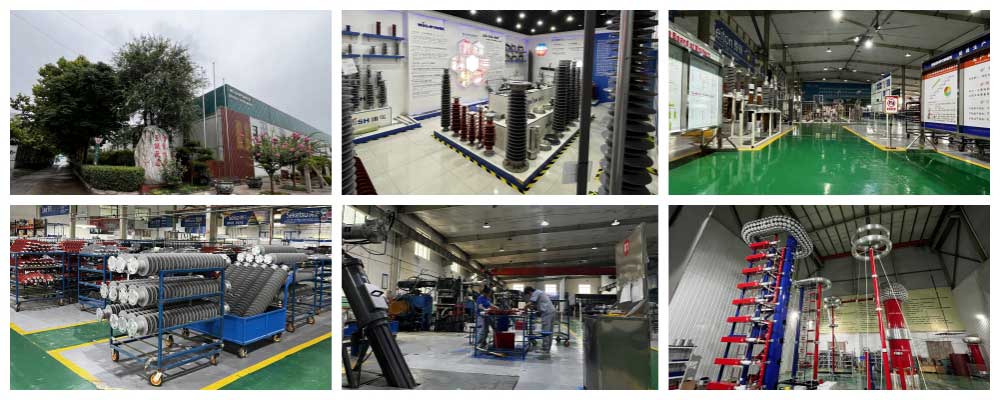
Exhibition

Hot Tags: Electrical Fuse Cutout, Fuse Cutout, China, manufacturers, ISO factory, wholesale, KEMA, high quantity, best, price, low to high voltage














